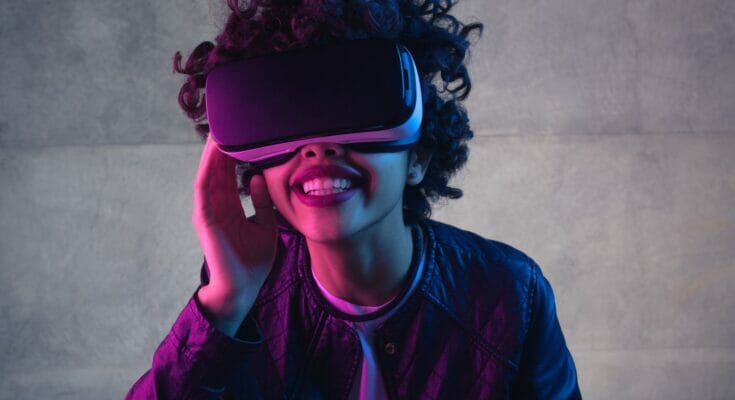Let’s discover virtual reality!
Virtual reality is an application that allows the player to interact and navigate in real time with a three-dimensional environment, generated by a computer.
Historically, the first virtual reality headset was developed in 1961 by Philco. This helmet then made it possible to see from a distance through a video camera. The technology and investment of researchers thus progressed until 1998 when a large part of the virtual reality (VR) interfaces began to be accessible to the general public.
Nowadays, one can observe different models of virtual reality headsets by different companies, as well as games adapted to a large part of the population.
Of course there are several uses for virtual reality, including virtual reality (VR) video games, but also more diverse uses such as the use of virtual reality for cybersexuality, in military combat training, flight simulation, medical treatment and psychotherapeutic treatment with cyberpsychology.

What is cyberpsychology?
This term defines how psychology can have as an object of study the impacts of cyberspace on human behavior and the functioning of society.
Cyberpsychology makes it possible to control the exposure environment and several variables, such as the safe environment, the presence or absence of external factors, the combined stimulation of several senses…
Virtual reality is thus used in the field of psychology to help individuals’ exposure and desensitization to their fears, for example: fear of enclosed spaces, fear of driving, fear of flying, fear of heights, fear of needles and blood, fear of open spaces, fear of public speaking, fear of spiders, fear of going to school, fear of birds, social phobia…
Virtual reality and treatment of phobias
Phobias are pervasive fears that are triggered by specific situations that can greatly impair a person’s functioning, leading them to avoid and safe behaviors to manage this intense fear.
A specific phobia is associated with a particular object, place or situation that generates excessive, invasive and unreasonable fear of that situation/object that does not then represent a real and immediate danger.
Here are examples of specific causes of phobias:
· animals;
· insects;
· thunderstorms;
· heights;
· bridges;
· elevators;
· injuries (including blood and bites);
· death;
· tight spaces (claustrophobia).
One in 10 people may have specific phobias (possible to have more than one at a time) during their lifetime.

How to treat a phobia with virtual reality?
In a cognitive-behavioral approach, the treatment of anxiety disorders and phobias is done through prolonged, repeated and gradual exposure to anxiety-provoking situations.
In the context of virtual reality, the exhibition is done in virtual situations, in a safe and supervised environment. The goal is to gradually accustom the patient to the anxiety-provoking sensations and allow him to gradually gain confidence in his ability to overcome danger and survive the situation. Learning in a virtual context is then reproduced in real situations.

Example of a VR treatment:
Social phobia is a form of pervasive anxiety associated with the fear of being ridiculed or embarrassed in social situations. This fear can lead individuals to completely avoid social situations, for example: parties, shows, but sometimes also avoid going to school.
Virtual processing makes it possible to create visual and verbal interactions with avatars, to reproduce situations of public exposure or relational conflicts. Virtual treatment allows the patient to expose himself at his own pace in a safe environment, while learning to develop his social and interpersonal skills.

Examples of programs and applications with virtual reality
More and more applications exist for VR headsets or even cell phones, to combine virtual reality and mental health.
Here are some examples of programs available at certain expenses to work on stress management, meditation or mental health in virtual reality or augmented reality.
** I have not, personally, tested these applications and programs, they are only examples found. Please inform yourself and make sure they meet your needs before investing in the purchase of these.**
– C2 Care Program,which presents a Virtual Reality Exposure Therapy (TERV) program for the treatment of anxiety disorders, eating disorders and addictions. https://psy.c2.care/fr/
– XRHealth therapist, which offers two applications: Virtual Reality (VR) and Augmented Reality (AR) for PICO Neo 2 VR headset. https://www.xr.health/products/
– Healium,a neurofeedback and augmented reality application for cell phones with stress and anxiety management programs through virtual and visual immersion. https://www.tryhealium.com/#how-it-works
– VR Therapy Floreo,a virtual reality program to teach social, behavioral and communication skills to people with Autism Spectrum Disorder (ASD). https://www.floreotech.com/
– Avatar Therapy, a 3D virtual reality program for the treatment of schizophrenia. https://avatar-intervention.ca/
Elsa Brais-Dussault/ LudiPsy, psychologist

